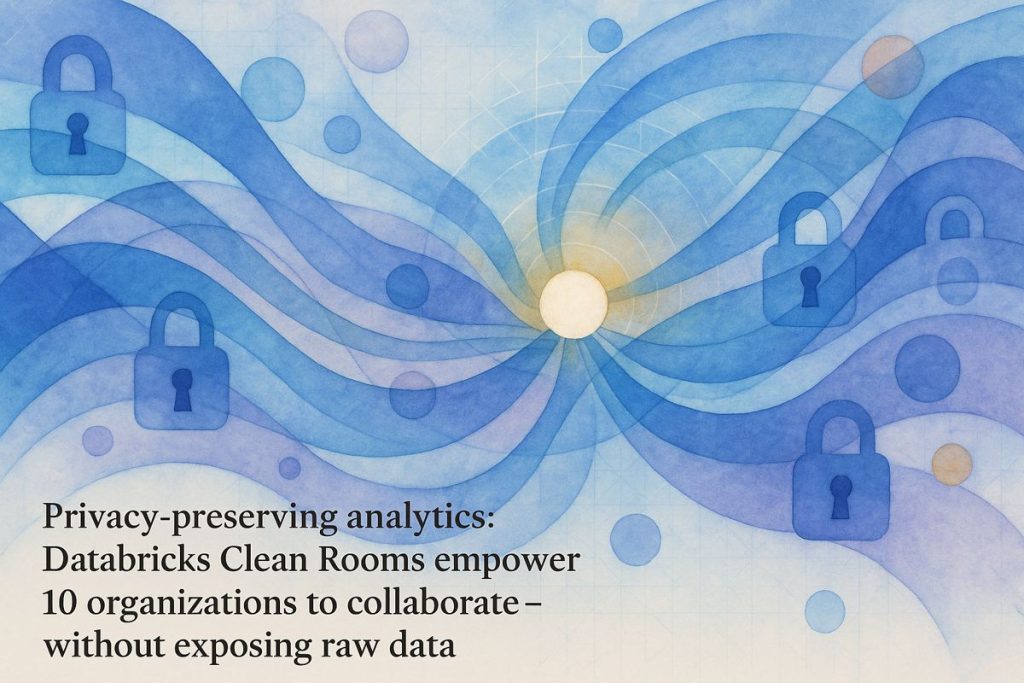Databricks Delta Sharing and Clean Rooms in 2025 make it easy and safe for different companies to work together with data, even if they use different clouds or have strict privacy rules. With new features like secure logins through OpenID Connect and cross-platform data sharing, organizations can share and analyze data without messy setups or fear of leaks. Clean Rooms let up to ten groups analyze data together without ever showing the raw details, and everything is carefully tracked for security. This way, banks, hospitals, and more can get the insights they need while staying fully private and following laws like HIPAA and GDPR. It feels like a smooth, safe, and magical way to collaborate on data.
What are the key features of Databricks Delta Sharing and Clean Rooms in 2025?
Databricks Delta Sharing and Clean Rooms in 2025 enable secure, compliant data collaboration across multiple clouds and organizations through:
- OpenID Connect (OIDC) token federation for secure, federated identity management
- Cross-platform view sharing and Lakehouse Federation
- Multi-party, privacy-preserving analytics with ephemeral clean rooms
- Comprehensive compliance with HIPAA, GDPR, and audit trails
The New Shape of Sharing: Not Your Grandparent’s Data Exchange
There’s a peculiar electricity in the air when regulated industries—think pharmaceuticals, banking, or health insurance—talk secure data collaboration. Maybe it’s the tickle of compliance audits looming, or the memory of that time someone almost emailed a patient file to the wrong John Smith. Either way, Databricks has tossed another log on this crackling fire with its latest 2025 updates to Delta Sharing and Clean Rooms.
Now, I’ll admit: the first time I read about Delta Sharing, I wondered if anyone could possibly be excited about a “secure open protocol.” Aren’t protocols just the wallpaper of IT—necessary but ignorable? And yet, here’s where my own skepticism was upended. The latest batch of upgrades—especially OpenID Connect (OIDC) token federation—felt less like new wallpaper and more like someone built a secret passage behind the bookshelf (with serious security guards posted at every turn).
I found myself oddly delighted by the cross-platform view sharing and Lakehouse Federation—finally, a way for a multinational behemoth to connect data across AWS, Azure, Google Cloud, and, yes, even remnants of on-premises infrastructure, without having to wrangle a medley of ad hoc scripts, VPNs, and half-remembered SSH tunnels. It’s a bit like orchestrating a symphony after years of listening to out-of-tune soloists. The result? A system robust enough to whisper sweet nothings to HIPAA and GDPR, yet nimble enough not to lock you into just one vendor’s arms. (A little like Polyjuice Potion, minus the hair.)
Delta Sharing’s 2025 Upgrades: Beyond Vendor Lock-In
What’s changed, specifically? Delta Sharing, which first claimed the title of “open protocol for secure data sharing across any platform or cloud,” now includes:
- OpenID Connect (OIDC) Token Federation: This isn’t just a fancy phrase. It means you can federate identity from Okta, Azure Entra ID, or whatever flavor your enterprise prefers, and allow fine-grained, secure access—without the need for every party to sign up for yet another siloed login. Suddenly, cross-organizational collaboration doesn’t mean sacrificing sleep over potential breaches.
- Cross-Platform View Sharing and Lakehouse Federation: Imagine two banks—one in Zurich, the other in Singapore—working together on fraud analytics, despite their IT stacks reading like different dialects. Now those differences melt away, thanks to Lakehouse Federation. You get real-time, governed data sharing—no more passing CSVs like contraband in the night.
- Regulatory Compliance at the Core: The architecture is engineered for the likes of HIPAA and GDPR—not just as an afterthought, but as an integral thread. Not a small claim, but there it is.
For those craving the gory details or official language, the Databricks blog is the canonical source.
What’s it feel like in practice? The architecture is…quiet, in the way a good pair of noise-cancelling headphones is quiet. You notice what isn’t there: the friction, the risk, the nagging sense you’re one misconfigured API away from a headline.
Clean Rooms: Privacy Alchemy for the Multi-Party Age
The Clean Room, as Databricks imagines it, isn’t a sterile box with only two occupants anymore. As of 2025, we’re talking up to ten organizations sharing a single, ephemeral analytical crucible—each one protected, each one heard, and none required to surrender their precious raw data.
Here’s where I had to stop and ask myself: Could I actually trust this? Memories of a disastrous joint research project in 2018 flashed back—data leaked, tempers flared, and my inbox was a cacophony of “reply-alls.” But here’s the twist: Clean Rooms now support multi-party analytics under strict, managed environments. Every code snippet, every query, must be approved by all involved. No more wild-west SQL injections or accidental data leaks.
- Ephemeral, Managed Environments: Think of a hyperspectral clean room—every interaction leaves a trace, every actor is accounted for, and the environment self-destructs (well, virtually) after the job’s done. The air in the virtual space would probably smell of iced coffee and anticipation.
- Privacy-Centric Identity Resolution: The real magic? Linking datasets from disparate organizations for, say, patient matching or anti-fraud, without revealing anyone’s actual identity. You get the insights, none of the privacy litigation.
- Comprehensive Audit Trails: Every click, every query, every breath—logged. You want to satisfy an external auditor from the Journal of Digital Compliance? You’ll have the receipts.
The official Clean Rooms product page offers a fuller breakdown, but the takeaway is simple: multi-party, privacy-first collaboration isn’t a pipe dream anymore.
Industry Momentum and the Growing Databricks Ecosystem
Let’s not pretend this is all just theory. Mastercard, Intuit, and AppsFlyer (proper noun parade, anyone?) are already leveraging Clean Rooms for everything from secure risk modeling to collaborative clinical trials. I once watched a client in life sciences light up—literally, eyes wide—when a Clean Room finally let her team analyze trial data with a regulator without exposing a single patient’s record. Relief, pride, and a pinch of disbelief all
